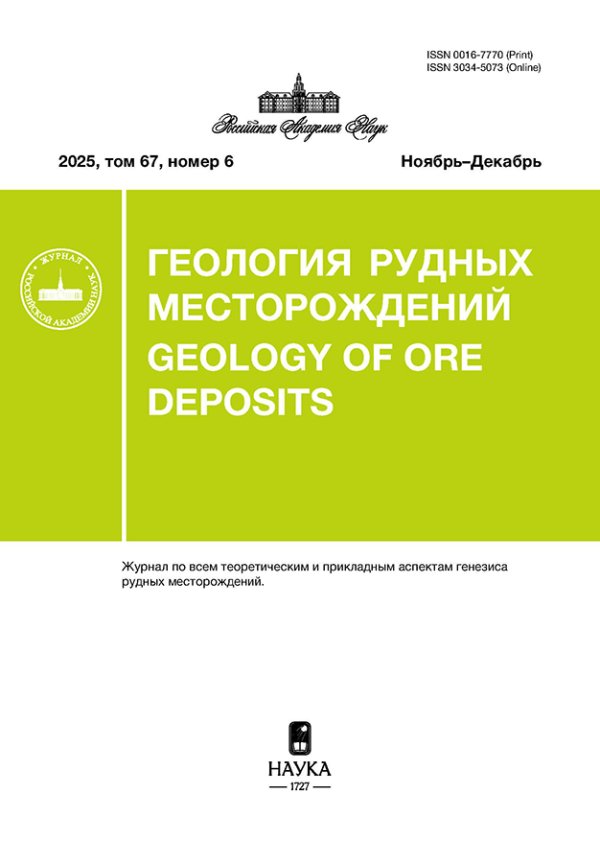Ore mineralization (Au, Ag ± Pt, Pd) and host metasomatic alteration were studied in amphibolites of the Kharbey metamorphic complex at the Polar Urals. The predicted gold field is well exposed in the Skalisty stream in the zone of the Khadata-Khammei thrust, controlled by a fault of the north-western direction. The host rocks are represented to varying amphibolites (up to the epidote-amphibolite facies of elevated pressures). During diaphthoresis, amphibolites underwent alteration transformations: chloritization, albitization, muscovitization, and silicification. The main part of the sulfides was deposited during the late silicification processes. Ore minerals are represented by sulfides and occurring as rare inclusions tellurides, selenides and native metals. Three stages of the sequential hypogenic hydrothermal ore-formation processes were identified. At an early stage of hydrothermal-metasomatic changes of rocks, high- and medium-temperature ore minerals were formed — pyrite, pentlandite, Ni-pyrrhotite, chalcopyrite and molybdenite, associated with chlorite (ripidolite). The next stage was associated with high- and medium-temperature hydrothermal processes and the development of quartz veins and veinlets, when the following minerals crystallized: pyrite, matilidite-galena, galena, sphalerite, molybdenite, chalcopyrite, bornite, pyrrhotite, chromferride, mercury electrum, tsumoite and low- and medium-fineness gold. Medium- and low-temperature hypogenic minerals of the third stage are represented by nickel- and cobalt-containing pyrite, chalcopyrite, galena, clausthalite-galena, hessite, melonite, merinskiite and merinskiite-melonite, associated with pycnochlorite-brunswigite and rhipidolite-daphnite. Recent hypergenic changes are characterized by the formation of secondary acanthite, hessite, naumannite-acanthite, hessite-acanthite-naumannite, native silver and covellite in ores.
 743-753
743-753


 754-765
754-765


 766-785
766-785


 786-797
786-797


 798–828
798–828


 829–843
829–843


 844-870
844-870


 871–893
871–893


 894–912
894–912












